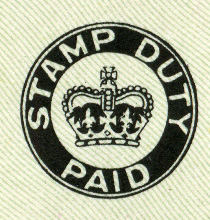
STAMP DUTY LAND TAX – FIRST TIME BUYERS’ RELIEF EXTENDED FOR SHARED OWNERSHIP
No doubt you will have seen one of the headlines from the Chancellor’s budget on 29 October 2018 is that first time buyers’ relief for Stamp Duty Land Tax (“SDLT”) is to be extended for first time buyers of shared ownership properties(and applied retrospectively).
In this note Adam Crawford, Partner and Head of New Build Homes, explains what this actually means to the shared ownership buyer.
The Old Rules
First time buyers’ relief was introduced in the 2017 budget and since 22 November 2017 first time buyer’s relief could be claimed provided a buyer met the criteria (i.e. broadly speaking that none of the buyers have ever owned another property anywhere else in the world). First time buyers’ relief could be claimed for purchases of up to £500,000 on the following basis:
- 0% on the first £300,000
- 5% on the remainder up to £500,000
This is compared to current SDLT rates as follows(i.e. without any first time buyers relief):
This essentially means that a first time buyer buying for less than £300,000 would pay no SDLT and a first time buyer buying between £300,000-£500,000 will save £5,000 as they will not have to pay SDLT on the first £300,000 (although they will need to pay 5% on the part of the purchase price between £300,000-£500,000).
There is no relief where the purchase is for a price of more than £500,000.
Shared Ownership
First time buyers’ relief was more complicated for the purchase of a new build shared ownership property (part buy/part rent) where there is the option for the buyer to pay SDLT on either the share and the rent or on the full market value of the property (known as a full market value election). Under the previous SDLT rules first time buyers’ relief could only be claimed if a full market value election was made.This means that if the full market value was less than £300,000 no SDLT would be payable and if the full market value was between £300,000-£500,000 the SDLT was only paid at 5% on the purchase price over and above the £300,000 threshold (assuming a full market value election was made).
Under the previous SDLT rules first time buyers’ relief could not be claimed whereSDLT was paid on the share and the rent. Where the full market value exceeded £300,000this often resulted in first time buyers electing to pay on the share and the rent, as this was usually cheaper than paying SDLT on the full market value. However, this does result in further SDLT being due for future staircasing transactions (buying additional shares in the property).
When electing to pay SDLT on the share and the rent this could often result in substantial SDLT being due as a result of the premium exceeding the SDLT threshold of £125,000and the level of rent payable for the share in the property retained by the Housing Association/Landlord.
The New Rules
In the October 2018 budget the Chancellor announced an extension of the first time buyers’ incentive to shared ownership properties; but what does this actually mean?
Firstly, it is worth noting that there is no change to making a full market value election i.e. if a buyer opts to pay on the full value of the property they will still benefit from the first time buyers incentive provided they meet the eligibility criteria and provided the purchase price is less than £500,000. This will still mean that no further SDLT is payable when staircasing takes place.
However, the key change is where a buyer opts to pay on the share and the rent, provided the full market value is £500,000 or less, a buyer will now be able to claim first time buyers’ relief on both the price paid for the share and the rent(i.e. 0% payable on the price paid for the share from £0-£300,000 and 5% on any part of the price paid for the share above £300,000 and below £500,000).Where market value is £500,000 or less the relief applies to the entire rent whether or not SDLT is payable for any part of the purchase price for the share which exceeds £300,000.
If the full market value exceeds £500,000 then SDLT will still be payable on the price paid for the share and the rent in accordance with the old rules.
A worked example of the SDLT a shared ownership buyer will pay under the new rules compared to the old rules is set out below:
SDLT payable under old rules when paying on share and rent:
Full Market Value: £450,000
35% share price: £157,500
Annual Rent payable: £8,043.75
SDLT payable on Premium:£650
SDLT payable on Rent: £1,016
Total SDLT payable: £1,666
(SDLT payable on a full market value election would be £7,500)
SDLT payable under new rules when paying on share and rent:
Example One (premium for share under £300,000):
Full Market Value: £450,000
35% share price: £157,500
Annual Rent payable: £8043.75
SDLT payable on Premium: £0
SDLT payable on Rent: £0
Total SDLT payable: £0
Example Two (premium for shareover £300,000):
Full Market Value: £450,000
75% share price: £337,500
Annual Rent payable: £3093.75
SDLT payable on Premium:£1,875
SDLT payable on Rent: £0
Total SDLT payable: £1,875(SDLT payable on a full market value election is still £7,500)
It is important to note when paying SDLT on the share (and the rent if applicable)that SDLT will still be payable for future staircasing transactions irrespective of the new rules (unless a full market value election is made).
Retrospective Refunds
In perhaps a surprising move, but one that will be most welcome to buyers who purchased in the last year, the government have also announced that they will apply the relief retrospectively from 22 November 2017. Accordingly, any shared ownership buyer who completed their purchase after this date will be able to claim a refund from HMRC for any SDLT they paid on the share and rent. Again the full market value must have been under £500,000 on the grant of the Lease. Any refund must be claimed by 28 October 2019.
Is there a downside?
Whilst the change to SDLT first time buyers’ relief for shared ownership properties are welcome news for many it can be argued that rules could have gone further. Many shared ownership properties, particularly in London, have a full market value in excess of £500,000 and will still be liable for SDLT in accordance with the previous rules even when paying on the share and the rent.
It should also be noted that adding yet another rule also creates further complexities to SDLT for shared ownership properties.
It will be interesting to see how HMRC cope with the demand for refunds bearing in mind they currently take a long time to deal with simple enquiries.
Conclusion
Overall this can only be seen as good news for the shared ownership buyer and the housing associations/developers trying to help buyers take their first step into home ownership.
The changes further emphasise the need for a buyer to ensure they use a lawyer with considerable experience and understanding of shared ownership, first time buyers’ relief and new build property.
 Previous shared ownership buyers are advised to contact the lawyer who acted for them in their shared ownership purchase to seek a refund of their SDLT if they are eligible (although they should be aware that lawyers will charge for this service).
Previous shared ownership buyers are advised to contact the lawyer who acted for them in their shared ownership purchase to seek a refund of their SDLT if they are eligible (although they should be aware that lawyers will charge for this service).
If you would like to discuss this or any aspect of SDLT or Shared Ownership property please do not hesitate to contact Adam Crawford or one of our specialist New Build Homes team on 020 8567 3477 or nbh@prince-evans.co.uk
